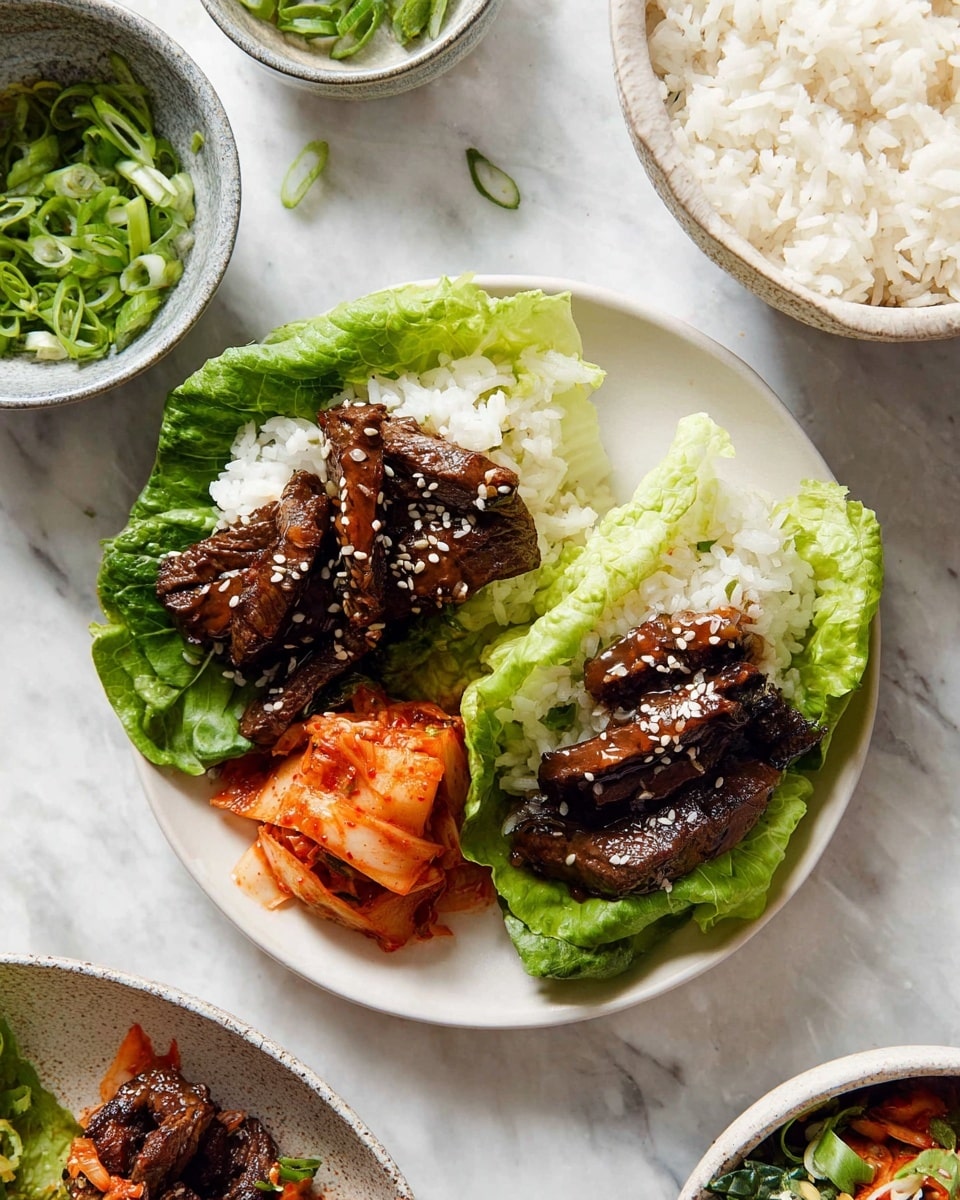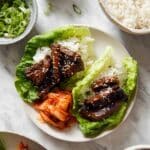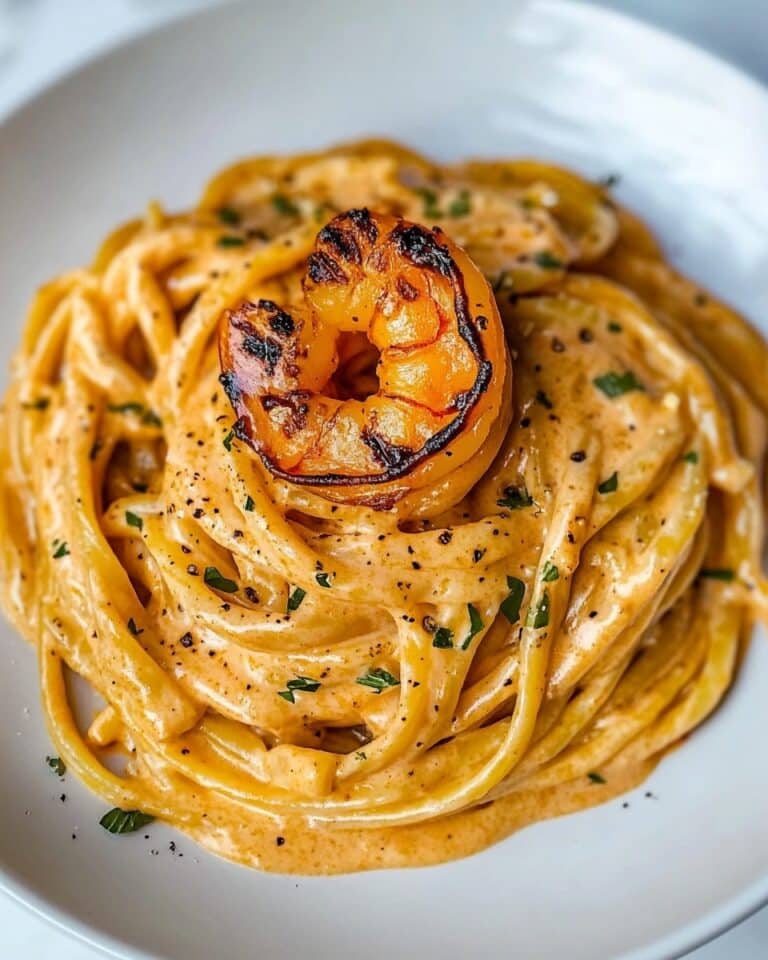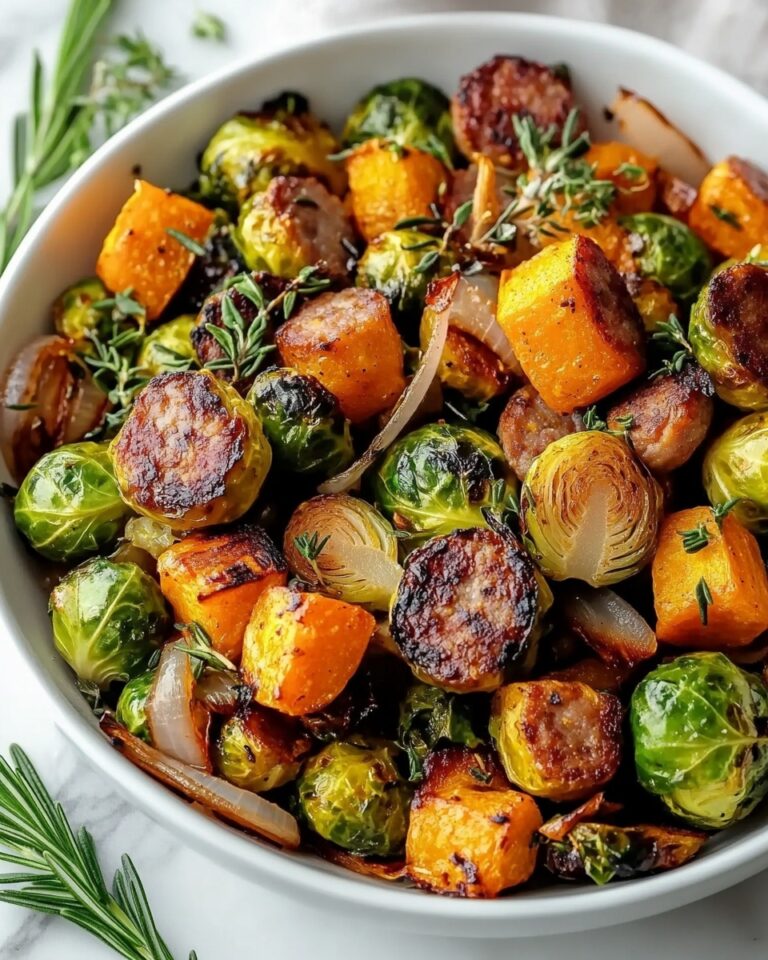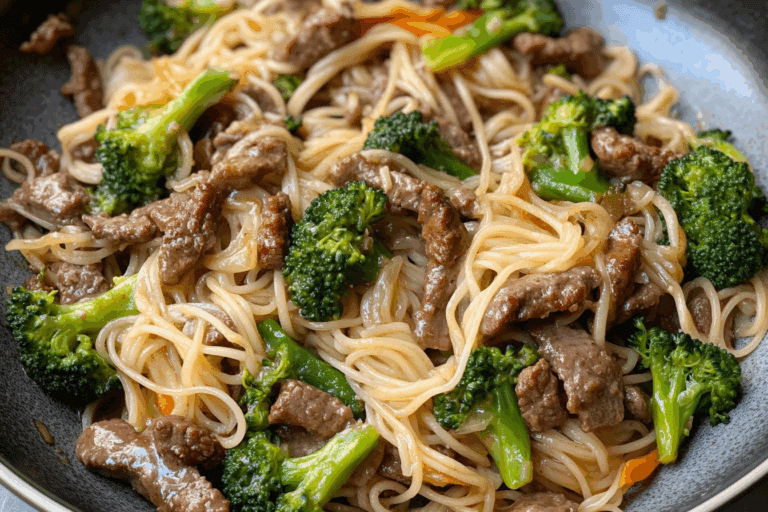Korean BBQ Beef (Bulgogi) Recipe
If you’re craving a dish that’s bursting with umami and sweet-savory goodness, this Korean BBQ Beef (Bulgogi) Recipe is exactly what you need. I remember the first time I whipped up this recipe at home—my whole kitchen smelled incredible, and dinner was a total hit. The balance of flavors from soy sauce, honey, and a touch of gochujang makes every bite irresistibly tender and flavorful.
This Korean BBQ Beef (Bulgogi) Recipe works perfectly for casual weeknight dinners but also shines when entertaining friends or family. What I love is how simple the ingredients are but how deeply satisfying the result feels when you grill or sear the thinly sliced beef just right. You’re going to want to keep this recipe in your regular rotation.
Ingredients You’ll Need
Each ingredient in this recipe plays a key role in delivering that signature bulgogi flavor. Grab quality beef and fresh aromatics to make sure your Korean BBQ Beef (Bulgogi) Recipe is as authentic and juicy as possible.
- Low-sodium soy sauce: I prefer low-sodium to control saltiness while keeping that rich soy flavor prominent.
- White or yellow onion: Grating the onion rather than chopping helps release its sweetness and tenderizes the meat.
- Honey or brown sugar: Adds a natural sweetness that caramelizes beautifully during cooking.
- Gochujang: This Korean chili paste gives a subtle spicy kick and depth of flavor—don’t skip it!
- Minced garlic: Fresh garlic is essential for that sharp aromatic punch.
- Grated fresh ginger: It brightens the marinade and adds warmth.
- Mirin: A sweet rice wine that balances the marinade with gentle acidity.
- Toasted sesame oil: Just a tablespoon imparts a nutty aroma that’s signature to Korean dishes.
- Cracked black pepper: For a hint of heat and complexity.
- Boneless rib-eye or top sirloin: Thin slices ensure quick cooking and maximum flavor absorption.
- Vegetable oil: For cooking, use a neutral oil with a high smoke point to get a nice sear without burning.
- Optional for serving (rice, bibb lettuce, kimchi, scallions, sesame seeds, ssamjang): These add texture and freshness to complete the meal.
Variations
I love how flexible Korean BBQ Beef (Bulgogi) Recipe can be, so I often tweak it depending on what I have on hand or the mood I’m in. Feel free to personalize it to suit your taste or dietary needs!
- Spicy Bulgogi: Adding extra gochujang or some finely chopped fresh chili really turns up the heat. I tried this once for a game night, and everyone loved the kick.
- Vegetarian twist: Swap beef for marinated mushrooms or tofu for a meatless version that still packs flavor.
- Different cuts of meat: If rib-eye or sirloin aren’t available, skirt steak or flank steak thinly sliced works great as well.
- Sweetener swaps: Try maple syrup instead of honey for a slightly different sweetness that’s equally delicious.
- Marination time: Longer marinating (overnight) intensifies the flavors, but if you’re in a rush, 30 minutes to an hour works fine too.
How to Make Korean BBQ Beef (Bulgogi) Recipe
Step 1: Prep the Marinade with Love
Start by grating your onion on a large-hole grater—that’s a secret to releasing a natural sweetness that softens the beef perfectly. Mix it with low-sodium soy sauce, honey, gochujang, minced garlic, grated fresh ginger, mirin, toasted sesame oil, and cracked black pepper in a bowl. Give it a good stir until the honey dissolves fully, and you get a glossy uniform marinade. This step sets the flavor foundation, so take your time here!
Step 2: Thinly Slice the Beef
Using rib-eye or top sirloin, slice the beef as thinly as possible—around ⅛ to ¼ inch thickness. A helpful trick I learned is to place the beef in the freezer for about 20 minutes before slicing; it firms up the muscle making thin slicing much easier. Once sliced, toss the beef in the marinade and make sure every piece is coated evenly. Let it sit at room temperature for 30 minutes, or pop it in the fridge for up to 24 hours if you want a deeper marinade flavor.
Step 3: Sear the Beef to Perfection
Heat a skillet over high heat and add a splash of vegetable oil. Shake off some excess marinade from the beef and cook in batches so you don’t overcrowd the pan. This keeps the beef searing properly instead of steaming. You’ll want to cook each side for about 1-2 minutes until edges are caramelized but meat remains tender. This quick sear locks in the juices and creates that beautiful Korean BBQ flavor.
How to Serve Korean BBQ Beef (Bulgogi) Recipe
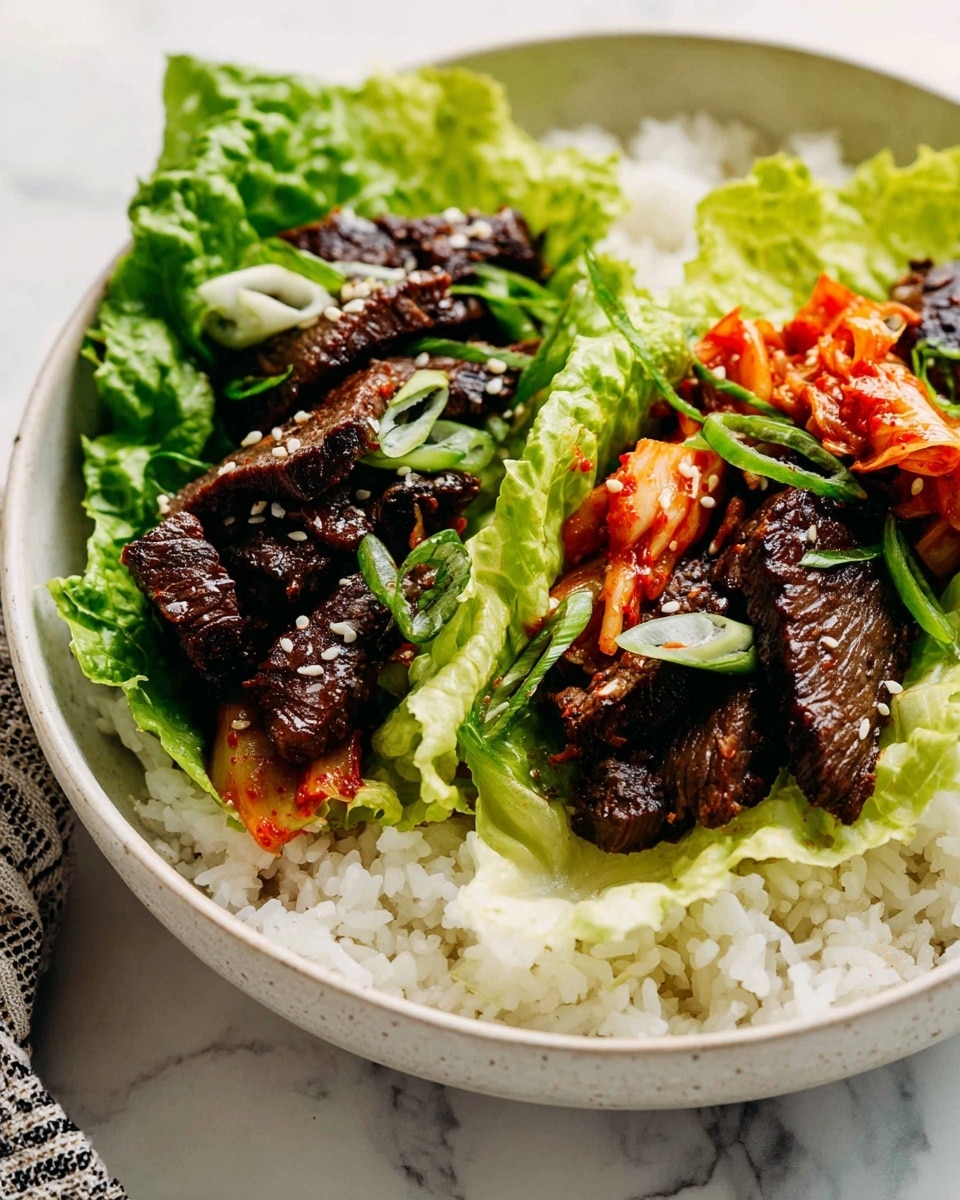
Garnishes
I’m a big fan of finishing my Korean BBQ Beef with a sprinkle of toasted sesame seeds and some thinly sliced scallions—it adds freshness and a lovely crunch. Sometimes, I toss in a few fresh chili slices or a drizzle of extra sesame oil if I want it a little more fragrant. These simple garnishes really elevate the whole experience.
Side Dishes
To enjoy an authentic meal, serve the bulgogi with steamed jasmine or short-grain rice. I also love offering bibb lettuce leaves so everyone can wrap the beef with some ssamjang (spicy-sweet soybean paste) and kimchi on the side. It feels interactive and keeps things fresh, balancing the richness of the meat.
Creative Ways to Present
For a friends’ dinner party, I’ve laid out the bulgogi with all the sides on a platter buffet-style—lettuce leaves, rice bowls, and various banchan (Korean side dishes). Everyone builds their own wraps, which makes it fun and social. Another time, I transformed leftovers into bulgogi tacos with a squeeze of lime and crunchy slaw, blending Korean and Mexican flavors beautifully.
Make Ahead and Storage
Storing Leftovers
After cooking, let the bulgogi cool completely, then store leftovers in an airtight container in the fridge. I’ve kept mine fresh for up to 3 days, and the flavors actually intensify overnight. Just make sure to reheat only what you plan to eat to avoid drying out the beef.
Freezing
You can freeze the marinated uncooked beef if you want to prep in advance. I portion the meat into freezer-safe bags, squeezing out the air before sealing. When thawed, it cooks just as well. For cooked leftovers, freezing is okay but the texture softens a bit, so I prefer to freeze before cooking.
Reheating
To reheat bulgogi, I warm it gently in a skillet over medium heat to avoid toughening the meat. Adding a splash of water or a little sesame oil helps retain moisture. Avoid the microwave for reheating if possible—stovetop really preserves that fresh-cooked texture and flavor best.
FAQs
-
Can I use other cuts of beef for Korean BBQ Beef (Bulgogi) Recipe?
Absolutely! While rib-eye and sirloin are ideal for tenderness and flavor, flank steak, skirt steak, or even brisket can work if sliced thinly. Just make sure to slice against the grain to keep the beef tender.
-
How long should I marinate the beef?
For best results, marinate the beef for at least 30 minutes to an hour. If you have more time, an overnight marinade in the fridge really deepens the flavors, making the beef even more succulent.
-
What if I don’t have gochujang?
Gochujang adds a unique sweet-spicy depth, but if you can’t find it, a mix of chili paste or sriracha with a bit of miso paste or honey can imitate the flavor reasonably well.
-
Can I make this recipe gluten-free?
Yes! Use gluten-free tamari instead of soy sauce and double-check that your gochujang and mirin are gluten-free as brands can vary.
-
What’s the best way to eat bulgogi?
Traditionally, bulgogi is eaten wrapped in lettuce leaves with ssamjang, kimchi, and rice—this helps balance the richness and adds freshness and texture. But you can also serve it over rice or noodles for a quick meal.
Final Thoughts
This Korean BBQ Beef (Bulgogi) Recipe is one of those dishes that feels like a warm hug from the inside out. Every time I make it, I find myself savoring not just the flavors but the joy of sharing it with people around the table. I really encourage you to give it a try—it’s surprisingly simple, incredibly tasty, and totally worth the little effort. You’ll have a new favorite for sure!
PrintKorean BBQ Beef (Bulgogi) Recipe
This Korean BBQ Beef Bulgogi recipe features thinly sliced rib-eye or sirloin marinated in a flavorful mixture of soy sauce, honey, gochujang, garlic, ginger, and sesame oil. It’s a delicious and authentic Korean dish perfect for grilling or pan-frying, served with rice and traditional accompaniments like kimchi and bibb lettuce.
- Prep Time: 15 minutes
- Cook Time: 6 minutes
- Total Time: 45 minutes
- Yield: 4 servings
- Category: Main Course
- Method: Frying
- Cuisine: Korean
Ingredients
Marinade
- ¼ cup low-sodium soy sauce
- ½ large white or yellow onion, grated on a large-hole grater
- 3 tablespoons honey or brown sugar
- 1 tablespoon gochujang (Korean chili paste)
- 1 tablespoon minced garlic
- 1 tablespoon grated fresh ginger
- 1 tablespoon mirin
- 1 tablespoon toasted sesame oil
- ¼ teaspoon cracked black pepper
Main
- 1 pound boneless rib-eye or top sirloin, cut into ⅛–¼-inch thick slices
- Vegetable oil, for cooking
To Serve (Optional)
- Rice
- Bibb lettuce
- Kimchi
- Scallions
- Sesame seeds
- Ssamjang (Korean dipping sauce)
Instructions
- Prepare the Marinade: In a large bowl, combine the low-sodium soy sauce, grated onion, honey or brown sugar, gochujang, minced garlic, grated fresh ginger, mirin, toasted sesame oil, and cracked black pepper. Mix well to create a balanced, flavorful marinade.
- Marinate the Beef: Add the thinly sliced rib-eye or top sirloin slices to the marinade, ensuring each piece is fully coated. Cover and refrigerate for at least 30 minutes to allow the flavors to deeply penetrate the beef, ideally up to 2 hours for maximum tenderness and taste.
- Cook the Beef: Heat a small amount of vegetable oil in a large skillet or grill pan over medium-high heat. Once hot, add the marinated beef slices in a single layer without overcrowding. Cook for 2-3 minutes on each side or until the beef is nicely browned and cooked through but still tender.
- Serve: Remove the beef from the heat and serve immediately. For an authentic experience, offer with steamed rice, bibb lettuce leaves, kimchi, chopped scallions, sesame seeds, and ssamjang sauce for wrapping and dipping.
Notes
- For a spicier version, increase the gochujang amount or add chili flakes.
- Thinly slicing the beef while it’s partially frozen makes it easier to cut.
- If you prefer, you can grill the beef slices instead of pan-frying for a smoky flavor.
- Marinate the beef at least 30 minutes but no longer than 24 hours to avoid overly soft texture.
- Use low-sodium soy sauce to control the saltiness of the dish.

